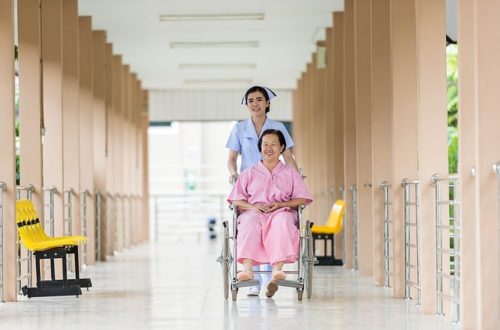Top 5 Structural Changes in Eyes Associated with Old Age

Your sight is a common sense until you lose it. When you are young and healthy, thoughts of losing your sight or having imperfect sight hardly, ever, cross your mind. However, as you grow older, you will begin to experience changes in your vision.
Old age is golden, yet, the aging process weakens most of your body organs and parts. Unfortunately, your eyes aren’t left out in the process. The following structural changes will be felt in your eyes as you grow older:
1. Vitreous detachment
Vitreous refers to a gel-like substance responsible for your eyes’ almond shape. Millions of intertwined fine fibers make up the vitreous and are attached to the retina. With age, the connection between the vitreous and the retina weakens and the gel-like substance pulls away from the surface of the retina. Some of the fibers break. As this happens, the vitreous pulls away from the retina and you start experiencing flashes of light and floaters that cast shadows on your eyes.
In extreme cases, the vitreous detachment causes retinal detachment or a macular hole leading to blindness.
2. Reduction in pupil size
Muscular strength diminishes with age. Pupils control the amount of light into your eyes responsively and loss on muscular strength means that your pupils lose their ability to control the amount of ambient light. This has been reported in most seniors over 60 years. The reduced size of the pupils also leads to dazzling by glares and sunlight.
Your eye doctor should be able to prescribe anti-reflective coated eye glasses with photochromic lenses.
3. Diminished peripheral sight
Your peripheral vision is very important especially when you drive. This field of view lets you put things into perspective and to make the right judgement. However, aging impedes this ability.
Unfortunately, your field of vision reduces by a small percentage every decade such that you will have lost up to 30 degrees of your peripheral vision when you hit 80 years.
4. Dry eyes
Your body’s ability to secrete tears reduces with age. Lacrimal glands secrete tears, but the amount of tears produced tends to reduce as we age and on the onset of menopause.
Tears offer lubrication to the eyes and the tears clean out dirt and debris. They also have antimicrobial properties keeping your eyes healthy. Therefore, a stinging or burning feeling of the eyes, pain and redness shouldn’t be ignored. Consult your eye doctor who will prescribe eye medication.
5. Reduced color vision
Cones are cells associated with color vision and are responsible for high spatial acuity, thus responsible for photopic vision. The production and activity of the cones is diminished by the aging process.
As you grow older, you will be unable to identify colors and this can be detrimental to you economically if your work involves different colors. There is no treatment for this condition.
Besides these structural changes to the eyes, there are diseases that are common in old age. They include presbyopia, cataracts, glaucoma, diabetic retinopathy and macular degeneration.
Some of these conditions are irreversible or un-treatable but dietary changes can improve them. Eat foods rich in omega oils, antioxidants and vitamin A.
Would you like to receive similar articles by email?





